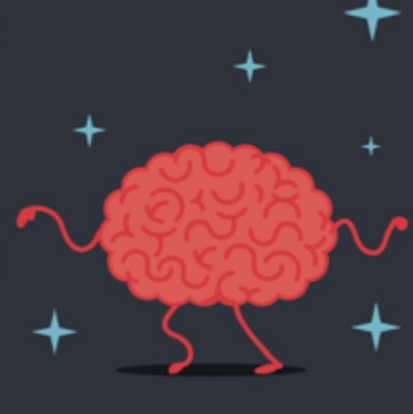Summary
In this lesson, students will learn about the concepts of growth mindset and neuroplasticity, how to identify their own mindsets, and methods to change them. Students will play through Advance U: The TALENT Machine, a digital game-based learning (DGBL) module, to explore these concepts in an interactive environment. Students will see examples of different types of mindsets, understand how mindset affects people's lives, and identify methods for changing and improving mindset.
Essential Question(s)
What is mindset? What is your mindset and how does it affect your life?
Snapshot
Engage
Students take a mindset quiz in Desmos and are introduced to the concept of fixed and growth mindsets.
Explore
Students play through the first act of Advance U: The TALENT Machine.
Explain
Students play through the second act of the game and reflect on the mindsets of the game characters.
Extend
Students reflect on their mindset quiz results and compose growth mindset statements.
Evaluate
Students play through the third and final act of Advance U: The TALENT Machine.
Materials
Advance U: The TALENT Machine Teacher’s Guide (attached)
Advance U: The TALENT Machine Research Brief (attached)
Advance U Game Overview (attached)
Game Portal Guide (attached)
Mindset handout (attached; one per student)
Computers with internet access for each student
K20 Game Portal accounts for each student
Writing materials: pens, pencils, paper, etc.
Engage
10 Minute(s)
To begin the lesson, provide students with your session code. Then, have students go to student.amplify.com/join/ and enter the session code. Inform students they are going to take a mindset quiz developed by Carol Dweck to determine their own mindsets.
While students complete the quiz in Desmos Classroom, pass out the attached Mindset handout. Have each student write their quiz score on the handout as well as the category that corresponds to their score. Have students keep their handouts for use during an I Notice, I Wonder activity later in the lesson.
Inform students that mindset is "a set of assumptions, methods, or notions held by a person that defines how they will react to various situations, challenges, or choices." For example, someone with a fixed mindset believes that intelligence is fixed and that a person cannot improve beyond their own natural talents. Someone with a growth mindset believes that intelligence is not fixed, but malleable, and that it can be improved through hard work and study.
Ask students to pair up and talk to their partners about the concept of fixed and growth mindsets. Have a few students share their thoughts with the class. Then, let students know they are going to play a game called Advance U: The TALENT Machine that explores the idea of growth mindset.
Explore
20 Minute(s)
Help students prepare their computers to play the game. Have students complete the first act, which should take about 10–15 minutes. Students are introduced to the game mechanics, story, and characters at the beginning of the game.
While students play, circulate the room to observe students’ progress and assist students who become stuck or confused. The first act ends when the character Miguel runs off screen. At that point, have students pause the game.
Explain
110 Minute(s)
Introduce students to the I Notice, I Wonder strategy. Using the Mindset handout passed out during the Engage portion, have students recall each of the characters they have met in the game so far. Ask students to work in pairs to write something they have noticed and something they wonder about each character’s mindset.
After giving students time to work on the handout, ask for volunteers to share their thoughts. Hold a class discussion about the mindset of each character in the game.
Ensure that computers are ready for students to continue playing the game. Have students play through the second act, which is estimated to take 45–120 minutes (about 100 minutes on average). Be aware that play times can vary widely among players, so some students might need extra time while others complete each act quickly.
In Act 2, students gain a greater understanding of each character’s mindset and discover ways to improve or change those mindsets. While getting to know the characters, students learn about the concepts of neuroplasticity, fixed mindset, and growth mindset. Students work to change the characters' outlooks by using the information they learn in the game.
While students play, circulate the room to observe students’ progress and assist where needed. Make sure to keep students focused on the concept of fixed and growth mindsets and how mindset can be changed. Act 2 is complete once all characters have returned to the TALENT Machine in the quad. At that point, have students pause the game.
Once all students have finished Act 2, have them return to the Mindset handout and add what they have noticed and what they wonder about the remaining characters introduced in Act 2.
Extend
20 Minute(s)
Ask students to think about the score they received on the mindset quiz at the beginning of the lesson. As they reflect, have students look at the list of characters on the Mindset handout and think about which of the characters they relate to and why—their reasoning should focus on what they’ve learned about mindset and how the brain learns. On the back of the handout, have students write two to three statements about how they might change their own mindsets based on what they have learned.
Evaluate
20 Minute(s)
Ensure that computers are ready for students to continue playing the game. Have students play through the final act, which should take about 10–15 minutes.
While students play, circulate the room to observe students’ progress and assist where needed.
Resources
Examined Existence. (n.d.). Carol Dweck on fixed mindset vs. growth mindset. https://examinedexistence.com/carol-dweck-on-fixed-mindset-vs-growth-mindset/
Halstied, L. (n.d.). Mindset Test. Desmos. https://teacher.desmos.com/activitybuilder/custom/61dd995b31667908deeecfa1
K20 Center. (2015). Advance U: The TALENT machine [Video game]. University of Oklahoma. https://learn.k20center.ou.edu/game/1003
K20 Center. (n.d.). I Notice, I Wonder. Strategies. https://learn.k20center.ou.edu/strategy/180
K20 Center. (n.d.). Desmos Classroom. Tech tools. https://learn.k20center.ou.edu/tech-tool/1081




